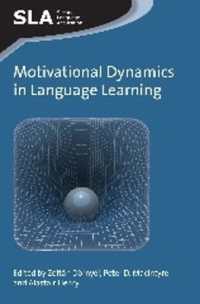- ホーム
- > 洋書
- > 英文書
- > Business / Economics
Full Description
The concept of accessibility is linked to the level of opportunities available for spatial interaction (flows of people, goods or information) between a set of locations, through a physical and/or digital transport infrastructure network. Accessibility has proved to be a crucial tool for understanding the framework of sustainability policy in light of best practice planning and decision-making processes. Methods such as cost-benefit analysis, multi-criteria analysis and risk analysis can benefit greatly from embedding accessibility results.
This book presents a cohesive collection of recent studies, modeling and discussing spatial interaction by means of accessibility indicators. Three key areas of information are discussed:
(i) methods and data sources used to estimate spatial interaction through accessibility indicators;
(ii) spatial and social dimension of accessibility;
(iii) accessibility as a driver of spatial interaction.
Accessibility and Spatial Interaction demonstrates the integration of spatial economics with transport and planning science, using accessibility concepts and measures in exciting new ways. Policy makers and practitioners in transport and urban planning will appreciate this fresh level of insight, and academics in economics, sociology and geography will find this book an important reference point.
Contributors include: P. Arbués, J. Baños, S. Caschili, A. Condeço-Melhorado, A. de Montis, G. Galiazzo, U. Gråsjö, J. Gutiérrez, K. Haynes, A. Holl, C. Karlsson, R. Kulkarni, M. Mayor, D.P. McArthur, K. Nagel, T.W. Nicolai, J. Östh, A. Reggiani, P. Remoaldo, V. Ribeiro, M.H. Salas-Olmedo, L.A. Schintler, R. Stough, I. Thorsen, D. Trogu, J. Ubøe
Contents
Contents:
1. Accessibility and Spatial Interaction: An Introduction
Ana Condeço-Melhorado, Aura Reggiani and Javier Gutiérrez
PART I: ADVANCES IN MODELING ACCESSIBILITY AND SPATIAL INTERACTION
2. Novel Methods for the Estimation of Cost-Distance Decay in Potential Accessibility Models
John Östh, Aura Reggiani and Giacomo Galiazzo
3. Transport Networks and Accessibility: Complex Spatial Interactions
David Philip Mcarthur, Inge Thorsen, Jan Ubøe
4. High Resolution Accessibility Computations
Thomas W. Nicolai, Kai Nagel
5. Sensing 'Socio-Spatio' Interaction and Accessibility from Location-Sharing Services Data
Laurie A. Schintler, Rajendra Kulkarni, Kingsley Haynes and Roger Stough
PART 2: THE SOCIAL AND SPATIAL DIMENSION OF ACCESSIBILITY
6. Spatial Organisation and Accessibility: A Study of US Counties
Andrea De Montis, Simone Caschili and Daniele Trogu
7. Border Effect and Market Potential: The Case of the European Union
María Henar Salas-Olmedo, Ana Condeço-Melhorado and Javier Gutiérrez
8. Mapping Transport Disadvantages of Elderly People in Relation to Access to Bus Stops: Contribution of Geographic Information Systems
Vitor Ribeiro, Paula Remoaldo and Javier Gutiérrez
PART 3: ACCESSIBILITY AS A DRIVER OF SPATIAL INTERACTION
9. Productivity and Accessibility of Road Transportation Infrastructure in Spain. A Spatial Econometric Approach
Pelayo Arbués, Matias Mayor and José Baños
10. Location, Accessibility and Firm-Level Productivity in Spain
Adelheid Holl
11. Accessibility: An Underused Analytical and Empirical Tool in Spatial Economics.
Urban Gråsjö and Charlie Karlsson
Index







